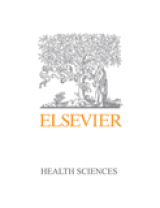Markell and Voge's Medical Parasitology - Elsevier eBook on VitalSource, 9th Edition
- Ten-page insert with full color plates of various parasites, eggs, and life cycles provides students with real-life examples of how parasites and their associated material appear in order to facilitate their identification in the laboratory.
- Summary Tables appear at the ends of the parasite/disease chapters to summarize the main features of the chapter and to present the salient information from the chapter to allow students better comprehension of the material.
- Life cycle drawings show progression of parasites from infancy to adult so students can recognize parasites at each stage of life.
- Disease distribution maps depict the global distribution of key parasites to help students see the global impact that various parasites have.
- The text explores arthropods both as parasites in their own right and as vectors or intermediate hosts for other parasites so students can understand the direct and indirect impact that they have on health.
ISBN :
9781437719826
Publication Date :
27-01-2006
- Ten-page insert with full color plates of various parasites, eggs, and life cycles provides students with real-life examples of how parasites and their associated material appear in order to facilitate their identification in the laboratory.
- Summary Tables appear at the ends of the parasite/disease chapters to summarize the main features of the chapter and to present the salient information from the chapter to allow students better comprehension of the material.
- Life cycle drawings show progression of parasites from infancy to adult so students can recognize parasites at each stage of life.
- Disease distribution maps depict the global distribution of key parasites to help students see the global impact that various parasites have.
- The text explores arthropods both as parasites in their own right and as vectors or intermediate hosts for other parasites so students can understand the direct and indirect impact that they have on health.
New to this edition
- New two-color design gives the material a fresh look and highlights important details in illustrations.
- Improved illustrations include all line drawings redrawn with a second color added, as well as improved quality in the halftones.
- Thorough revision reflecting all the most recent research findings and the most cutting-edge techniques for diagnosis and treatment.
- Significant change in authorship with David John taking the role of lead editor, and with a new co-editor, William Petri, a proven expert, writer, and speaker in the field of parasitology.
Key Features
- Ten-page insert with full color plates of various parasites, eggs, and life cycles provides students with real-life examples of how parasites and their associated material appear in order to facilitate their identification in the laboratory.
- Summary Tables appear at the ends of the parasite/disease chapters to summarize the main features of the chapter and to present the salient information from the chapter to allow students better comprehension of the material.
- Life cycle drawings show progression of parasites from infancy to adult so students can recognize parasites at each stage of life.
- Disease distribution maps depict the global distribution of key parasites to help students see the global impact that various parasites have.
- The text explores arthropods both as parasites in their own right and as vectors or intermediate hosts for other parasites so students can understand the direct and indirect impact that they have on health.
Author Information
By David T. John, MSPH, PhD, Professor of Microbiology/Parasitology, Associate Dean for Basic Sciences and Graduate Studies, Oklahoma State University, College of Osteopathic Medicine, Tulsa, OK; William A. Petri, MD, PhD, Wade Hampton Frost Professor of Medicine, Microbiology and Pathology, Chief, Division of Infectious Diseases and International Health, University of Virginia Health System, Charlottesville, VA, USA
1 and Greg Martin, M.D., M.ScM.D., M.Sc, Grady Memorial Hospital, Room 2C-007, Emory University School of Medicine


